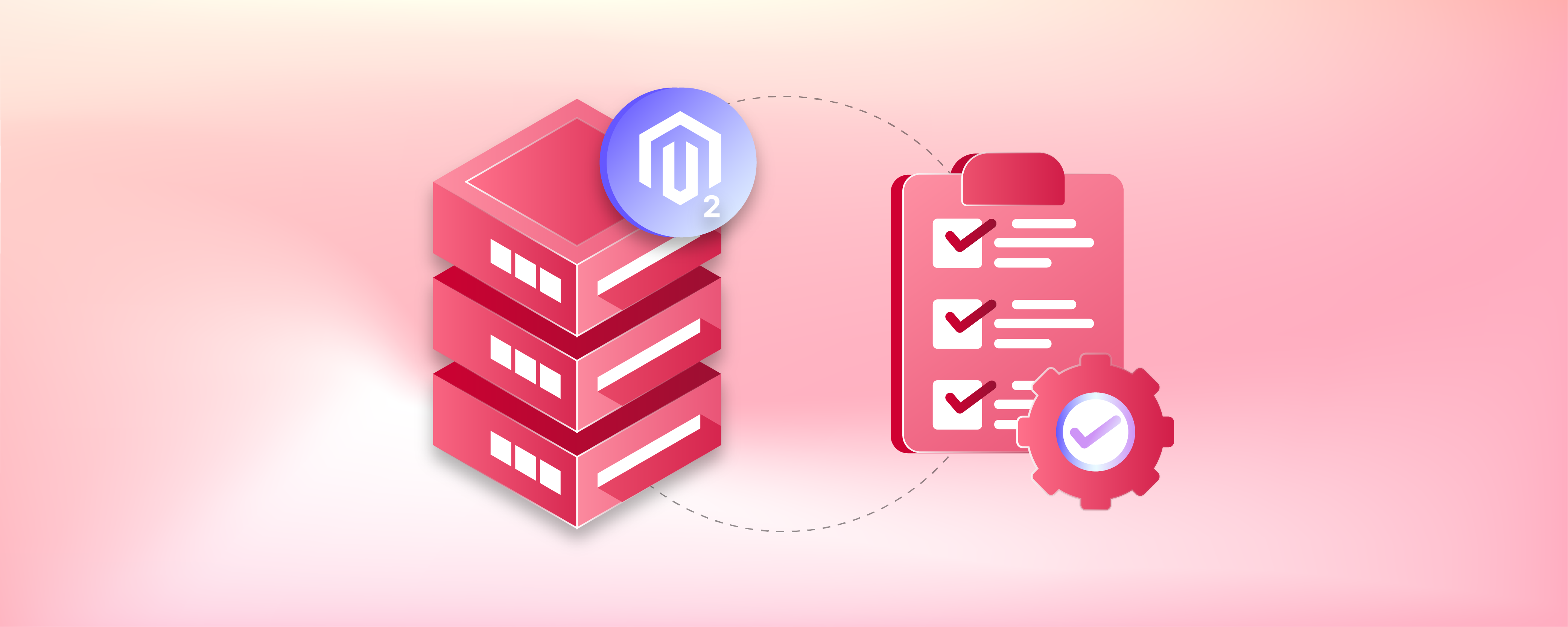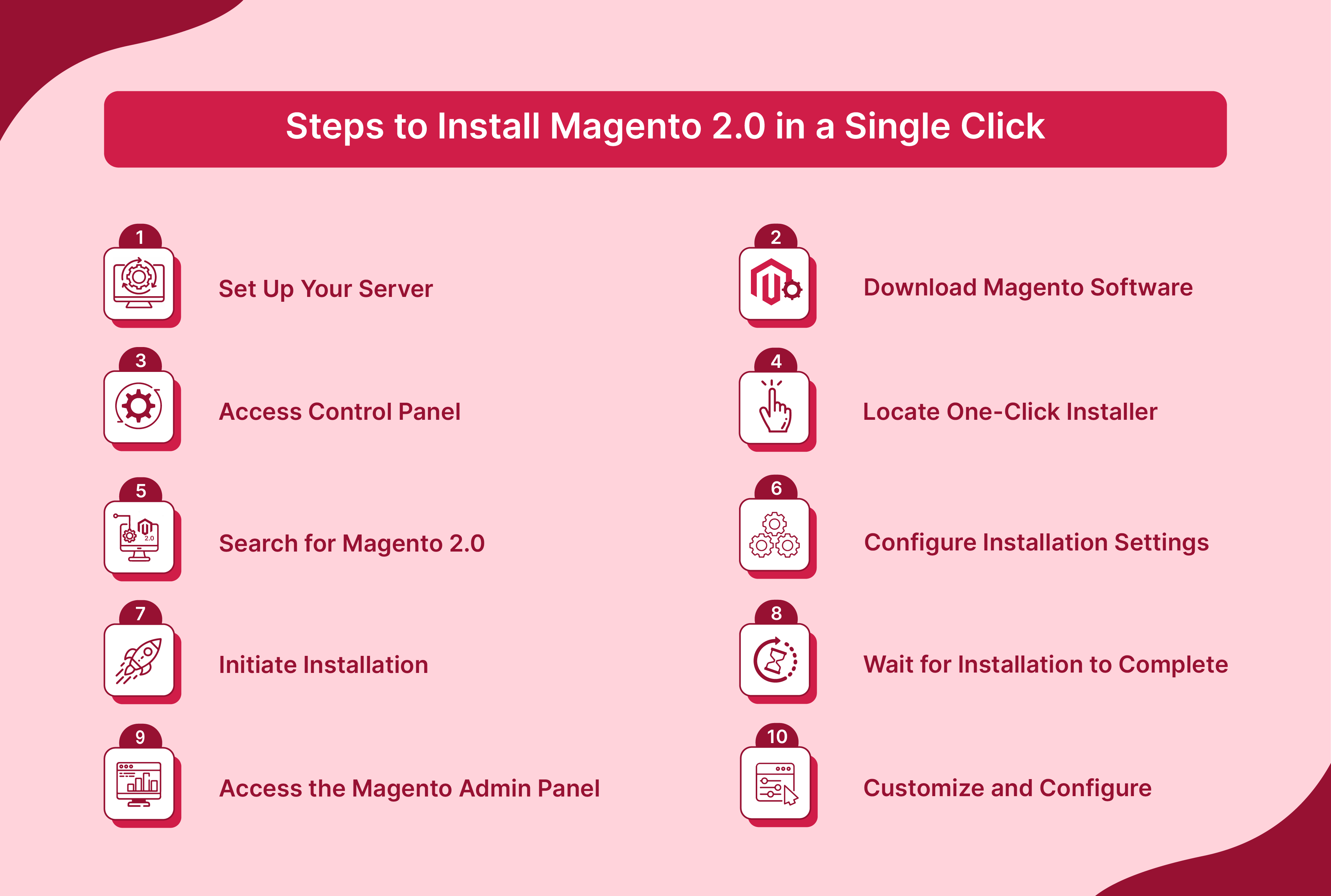
System Requirements for the Best Magento 2.0 Hosting
Setting up an online store with Magento 2.0? Don't navigate the complexities alone. Best Magento 2.0 hosting is a platform used to set up the widely used e-commerce platform Magento. This article explores the key system requirements for choosing the best hosting environment. It also explores the step-by-step process to set up your Magento 2.0 hosting.
Key Takeaways
-
Learn essential system requirements for hosting Magento 2.0.
-
Understand the importance of memory, operating systems, web servers, and databases for optimal performance.
-
Discover the recommended PHP versions and extensions for seamless compatibility with Magento.
-
Follow step-by-step instructions for easy installation of Magento 2.0 hosting in a single click.
System Requirements for Best Magento 2.0 Hosting
1. Memory Requirement

Your Magento hosting solution requires a minimum of 2 GB of RAM to manage Magento's resource-intensive processes efficiently. This includes:
- Database queries
- Caching
- Concurrent user sessions.
Adequate memory ensures that your Magento 2 store remains responsive. It prevents slowdowns and ensures a seamless shopping experience for customers.
2. Operating System

Magento web hosting is designed to run on Linux x86-64 operating system architectures. It offers stability, security, and compatibility with a wide range of distributions such as:
- RedHat Enterprise Linux (RHEL)
- CentOS
- Ubuntu
- Debian
These operating systems provide robust support for Magento's functionalities. It ensures reliable performance and ease of maintenance. Magento is not supported on operating systems such as Windows and MacOS.
3. Web Servers
The two web servers that offer a versatile solution for hosting Magento:
- Apache 2.4
- NGINX 1.x.
Apache excels in handling dynamic content and supporting complex configurations. NGINX is optimized to serve static content efficiently and handle high volumes of concurrent connections. This dual-server setup ensures optimal performance and scalability for your Magento website.
4. Database

Magento requires MySQL version 8.0 and MariaDB 10.4 for optimal performance, scalability, and security. These database platforms offer advanced features such as:
-
Improved indexing
-
Transaction processing
-
Data encryption
These also handle large datasets and complex queries in Magento Commerce Cloud projects. Besides, Magento is also compatible with MySQL 5.7.9, MariaDB 10.2, and Percona 5.7. These are not officially recommended as they have not been tested yet.
5. PHP Versions
Magento recommends and supports PHP 7.3.0, PHP 7.4.0, and PHP 8.1 for their performance enhancements, security updates, and language features.
6. Required PHP Extensions
Following are the PHP extensions that need to be installed:
- Ext-bcmath
- ext-ctype
- ext-curl
- ext-dom
- ext-gd
- ext-hash
- ext-iconv
- ext-intl
- ext-mbstring
- ext-openssl
- ext-pdo_mysql
- ext-simplexml
- ext-soap
- ext-xsl
- ext-zip
- ext-fileinfo
- ext-filter
- ext-sockets
- ext-sodium
- ext-tokenizer
- ext-xmlwriter
- ext-zlib
- Lib-libxml
Installing these PHP extensions ensures compatibility with Magento's core functionalities and third-party integrations. These enable a seamless user experience.
7. PHP OPCache
Implementing PHP OPCache improves PHP performance by storing precompiled scripts bytecode in shared memory. This reduces the overhead of script parsing and compilation. It results in faster execution of PHP scripts and reduced server load. It enhances the overall responsiveness and scalability of your Magento store.
8. PHP Settings

PHP configuration settings, such as memory_limit, are suggested because they can avoid common problems when using Magento.
9. Mail Server
A reliable Mail Transfer Agent (MTA) or SMTP server is required as Magento 2 hosting requirements. It handles:
-
Order notifications
-
Customer communication in Magento.
Ensuring seamless email delivery enhances customer engagement and trust. This leads to improved conversion rates and customer satisfaction.
10. Elasticsearch
Magento is tested with Elasticsearch version 7.6.x. It no longer supports 2.x, 5.x, and 6.x.
Integrating Elasticsearch version 7.6.x offers advanced features such as:
-
Full-text search
-
Faceted search
-
Typo tolerance.
These lead to higher sales and customer retention by:
-
Enhancing the search functionality of Magento stores.
-
Improving the speed and accuracy of product searches
-
Enabling customers to find products quickly and easily.
11. SSL Certificate

A valid and trusted SSL certificate is required for the Magento store. Self-signed SSL certificates are not supported. It encrypts data transmission between the server and the visitor's browser to protect sensitive information such as:
-
Login credentials
-
Payment details
-
Personal data.
This instills trust in customers and improves SEO rankings. It leads to increased traffic, conversions, and revenue for your Magento store.
12. System Dependencies Requirements
Here are some system tools required for Magento stores to streamline operations:
-
bash
-
gzip
-
lsof
-
MySQL
-
mysqldump
-
nice
-
php
-
sed
-
Tar
Installing these tools ensures smooth operations and efficient management of Magento stores.
13. Cache Technologies

Magento recommends developers use these cache technologies with their respective versions:
-
Varnish 6.x (compatible with Magento 2.4+)
-
Redis 5.0 (compatible with 2.4+) for page caching and session storage.
-
RabbitMQ 3.8.x.
These cache technologies optimize performance by reducing server load and improving response times for users. They enhance the overall user experience and satisfaction.
14. Supported Browsers
The following browsers are supported:
-
Microsoft Edge, latest–1
-
Firefox latest, latest–1 (any OS)
-
Chrome latest, latest–1 (any OS)
-
Safari latest, latest–1 (Mac OS only)
-
A desktop storefront Safari Mobile for iPad 2, iPad Mini, iPad with Retina Display (iOS 12 or later).
-
A mobile storefront Safari Mobile for iPhone 6 or later; iOS 12 or later, Chrome for mobile latest–1 (Android 4 or later).
They ensure a seamless shopping experience for all visitors. These cater to a diverse range of users and devices and maximize your store's reach and accessibility.
Steps to Install Magento 2.0 in a Single Click

1. Set Up Your Server
Before installing Magento 2, you must find a web server where you will host the platform. This will involve signing up for a web hosting plan and purchasing the hosting space.
Research various hosting providers to find one that offers Magento-compatible hosting plans. While selecting the best hosting provider, several other factors must also be considered, such as:
-
Server reliability
-
Speed
-
Scalability
-
Customer support quality
-
Pricing.
Look for providers with a good reputation and positive reviews from Magento users.
2. Download Magento Software
To install Magento, download the Magento software from the download page, which offers three options: Composer, Git, and Archive. Opting for the Archive version is the simplest method, especially for beginners. This version comes as a compressed file containing all the Magento software.
You can choose to download the file in ZIP or TAR format. Once downloaded, you can either run Magento on a local server (your computer) or upload it to a remote server (provided by your hosting provider) at a later stage.
3. Access Control Panel
After you have created the hosting account, log in to the control panel provided by your hosting provider. This is the interface you will use to manage your hosting account and website settings.
4. Locate One-Click Installer
Then, locate the section or tool that offers one-click installations of applications within the control panel. This feature is often labeled as "Softaculous," "Installatron," or something similar. It provides a convenient way to install popular software applications like Magento 2.
5. Search for Magento 2.0
Use the search functionality within the one-click installer tool to find Magento 2.0. This tool typically maintains a catalog of applications that can be installed with a single click.
Search for "Magento" or "Magento 2" in the application list to locate the desired version.
6. Configure Installation Settings
Before initiating the installation, configure certain settings specific to your Magento 2.0 installation. This may include:
-
Selecting the installation directory
-
Specifying the website name
-
Setting up administrative credentials (username and password)
-
Choosing language and localization options.
7. Initiate Installation
Once you've configured the installation settings, initiate the installation process. This will be done by clicking the appropriate button or link within the one-click installer tool.
The tool will then proceed to download the necessary files and install Magento 2.0 on your hosting account.
8. Wait for Installation to Complete
Depending on factors such as the speed of your internet connection and server resources, the installation process may take several minutes to complete. During this time, the installer will:
-
Download Magento files
-
Set up the database
-
Configure the necessary environment for your Magento store.
9. Access the Magento Admin Panel
After the installation is finished, you'll be provided with a link to access the Magento admin panel. This is the backend interface where you can:
-
Manage your store's settings
-
Add products
-
Configure payment gateways
-
Install extensions.
Log in using the administrative credentials you set during the installation process.
10. Customize and Configure
With access to the Magento admin panel, you can begin customizing your online store to fit your branding and business requirements. This includes:
-
Selecting a theme or designing a custom theme
-
Configuring shipping and tax settings
-
Integrating payment gateways
-
Setting up email notifications
-
Installing extensions to enhance functionality.
FAQs
1. Why is Magento 2.0 Hosting important?
Magento 2.0 Hosting is crucial because it provides the necessary infrastructure to run a Magento-based online store. It ensures fast loading times, secure transactions, and a seamless shopping experience for customers.
2. How does Magento 2.0 Hosting differ from regular hosting?
Magento 2.0 Hosting is tailored specifically for Magento sites, with optimized server configurations and resources. It handles the platform's unique requirements, such as database queries and high traffic volumes.
3. Can I use shared hosting for Magento 2.0?
It is possible to use a shared hosting plan for Magento 2.0. However, it's generally not recommended due to potential performance issues. Dedicated or VPS Magento hosting is preferable for better performance and scalability.
4. Which are the best hosting companies?
The five best Magento hosting providers are MGT-Commerce, Inmotion hosting, Cloudways, SiteGround, and A2 Hosting.
5. What features should I look for in Magento 2.0 Hosting?
Look for features like high-performance servers, SSD storage, and optimized server configurations. You should also look for automatic updates, free SSL certificate support, robust security measures, and 24/7 technical support.
6. How many types of Magento plans are available?
The five Magento hosting options are shared hosting, VPS hosting, dedicated hosting, cloud hosting, and managed Magento hosting.
7. Is fully managed hosting worth it?
Managed hosting offers convenience as the provider takes care of server management and maintenance tasks.
8. What are the advantages of dedicated server hosting for Magento?
The advantages of dedicated hosting for Magento are scalability, reliability, and customization.
Summary
This article covered all the system requirements that must be ensured for optimal performance of your best Magento 2.0 hosting environment. It also outlined several other points including:
-
The essential system requirements for hosting Magento 2.0 are memory, operating systems, web servers, and databases.
-
PHP versions, PHP extensions, PHP OPCache, and PHP settings are required for seamless compatibility with Magento.
-
Mail servers, Elasticsearch, SSL certificates, system dependencies, and cache technologies are additional requirements.
-
Follow step-by-step instructions for installing Magento 2.0 hosting in a single click.
Check out Magento hosting services to enhance the features of your Magento store and the experience it offers.

